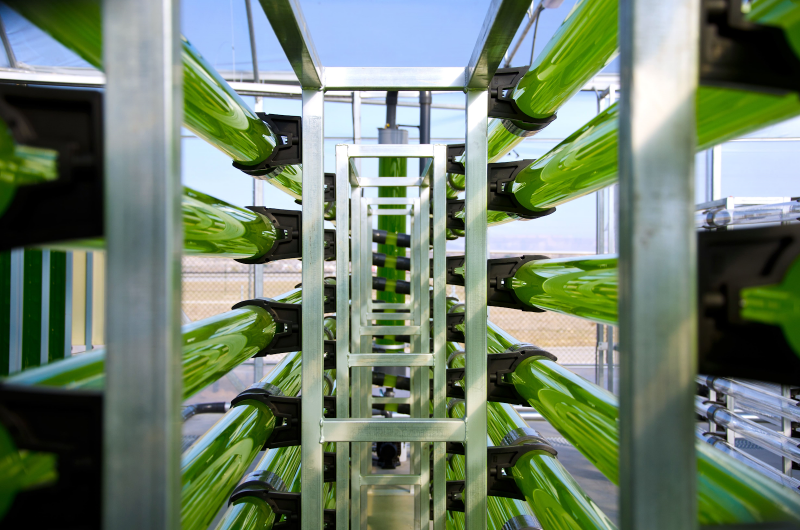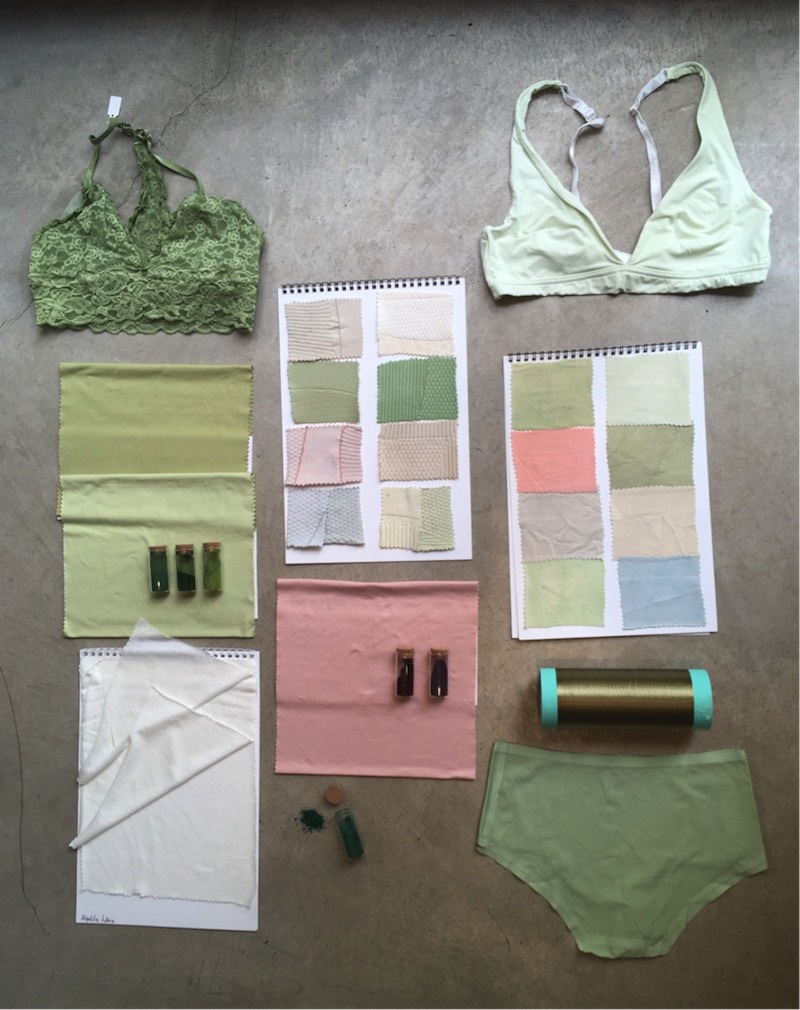Newsletter Signup - Under Article / In Page
"*" indicates required fields
Despite their ability to create matter out of thin air, algae and cyanobacteria have long been neglected by the biotech industry. Recently, however, they have started to gain traction in new market niches.
In the center of Paris, just across from Marie Curie’s old laboratory, Pierre Crozet, Associate Professor at Sorbonne University, studies photosynthesis. His research focuses on making microalgae easier to engineer and thus more appealing to the industry. “[Microalgae] are photosynthetic, and quite efficient at it, but require much less space or nutrients than land plants,” he told me.
The idea that new technologies should serve sustainability has started taking root in society. Using photosynthetic microbes for biotech applications appears to be a no-brainer. Algae grow biomass literally out of thin air, only needing water, carbon dioxide, and inorganic nutrients. Many grow on seawater and in lands not suitable for agriculture.
“Today, we are managing quite well in transforming algae. I would thus not consider it particularly difficult,” says Crozet, pointing out that, nowadays, obtaining a new strain of algae using genetic engineering takes just weeks. So, technically, they should be able to effectively replace bacteria and yeast, which generally require more complex growth facilities as well as the input of a sugar source in order to be able to generate any product.
However, algae have historically not been considered a good alternative to yeast and bacteria because of their slower growth rate. In addition, the crash of many algae biofuel companies about a decade ago dealt a blow to the field that it still has trouble recovering from.
The biofuel disaster
The early 2010s saw several startups forming to produce biofuels, mainly in the US. Many claimed to be close to offering algal biofuel at competitive market prices. Sapphire Energy, Solazyme, and Algenol, among others, received significant public and private investments and built up high expectations. But due to technological challenges and the drop in oil prices between 2015 and 2016, no product became commercially viable and these businesses either went bankrupt or had to radically change their focus.
“The [challenge] of algae and cyanobacteria comes down to their slow growth and the cost of production,” says Hugh Goold, Research Scientist at the NSW Department of Primary Industries, Australia. According to Goold, the amount of resources required to keep photosynthesis going is very high, meaning they don’t replicate as quickly as the bacteria and yeast commonly used in biotech applications.

Bacteria and yeast have been optimized for many years in biotech applications such as producing commodity chemicals as well as high-value compounds such as pharmaceuticals, meaning that photosynthetic organisms can no longer compete with these applications. “Investors have to know that you are going to produce a product cheaper than other people can. It isn’t worthwhile to produce something in algae instead of E. coli ‘just because,’” said Goold.
Despite this challenge, algae and cyanobacteria have started to get interest from new market niches where they could offer key advantages over traditional bioproduction methods.
Targeting the food industry
Microalgae capture sunlight using pigments of vibrant colors, such as chlorophylls, carotenoids, and phycocyanin. In particular, the algae spirulina and chlorella found their way to the market a long time ago as food supplements and food colorants. Algae are also an excellent source of protein, which opens up a lot of opportunities in the production of meat analogs and vegan food in general.
Unilever, a massive producer of food and other consumer goods, has seen the nutritional potential of microalgae, partnering with UK-based company Algenuity. “Algae are a source of high-quality plant-based protein,” said Manfred Aben, Vice President of Science & Technology at Unilever. “These products will appeal to a variety of consumers; for vegans and vegetarians but also for flexitarians and meat-eaters looking to reduce their consumption of animal products.”
“Within the food and beverage sector, the opportunities for microalgae-based ingredients are strong and tangible,” explained Andrew Spicer, CEO of Algenuity. “We do anticipate applications for microalgae-based ingredients in markets other than food and beverages where similar drivers around sustainability, plant-based, and natural sources of ingredients are equally strong.”
The Dutch food and biochemical company Corbion etablished a similar partnership with Nestlé, signaling that big players in the food industry are starting to increasingly recognize the potential value of algae products. Other companies gaining traction in the field are Algama in France seeking to provide meat alternatives, and AlgaEnergy in Spain producing food and feed as well as cosmetics and fertilizers from algae.
Beyond food and feed
In 2011, Renana Krebs graduated from the Shenkar College of Engineering, Design, and Art in Tel Aviv with a degree in fashion. While working for fashion brands, she realized the huge impact the industry has on the environment. Clothes and textiles manufacturing accounts for 10% of global carbon emissions and 20% of wastewater. Looking for alternative solutions, Krebs teamed up with her father and founded Algalife, a German-Israeli company offering algae-based fibers and textiles.
“Algalife stands for a better planet and a better fashion industry. We provide and enable the opportunity for everyone to make better choices, for a healthy, sustainable well-being,” Krebs told me. The company collaborates with fashion brands that are willing to learn and adjust their practices to include the ‘green’ fibers, and even pay more for sustainable solutions.

Renana Krebs considers algae as one of the most influential resources for sustainable development, and notes that she gets requests from companies outside the fashion industry.
Over in San Diego, California, the startup Algenesis has been using algae oil as a replacement for petroleum. The two first products launched by the startup, whose founders are all surfers, are a surfboard and flip flops made from an algal biopolymer that is biodegradable.
In addition to fashion, algae can also be used to produce sustainable alternatives to everyday petrochemical products. For example, the startup Living Ink, in the US, aims to provide an eco-friendly alternative to printing ink using cyanobacteria.
———
After some initial hiccups, algae seem to be finding their way into the market. The new generation of startups in this field focus more on business-to-business relationships but build their branding around customers’ demand for environmentally friendly products.
It seems clear that cyanobacteria and algae will not replace bacteria and yeast as fermentation organisms in traditional applications. However, they have unique characteristics and a potential waiting to be unlocked by more research and daring business ideas. “I cannot see limitations to what can be done with algae, but our own imagination,” noted Crozet.
This article is an update of the original published on 31/08/2020. Cover illustration by Elena Resko, pictures courtesy of AlgaEnergy and AlgaLife.
Partnering 2030: FME Industries Report







